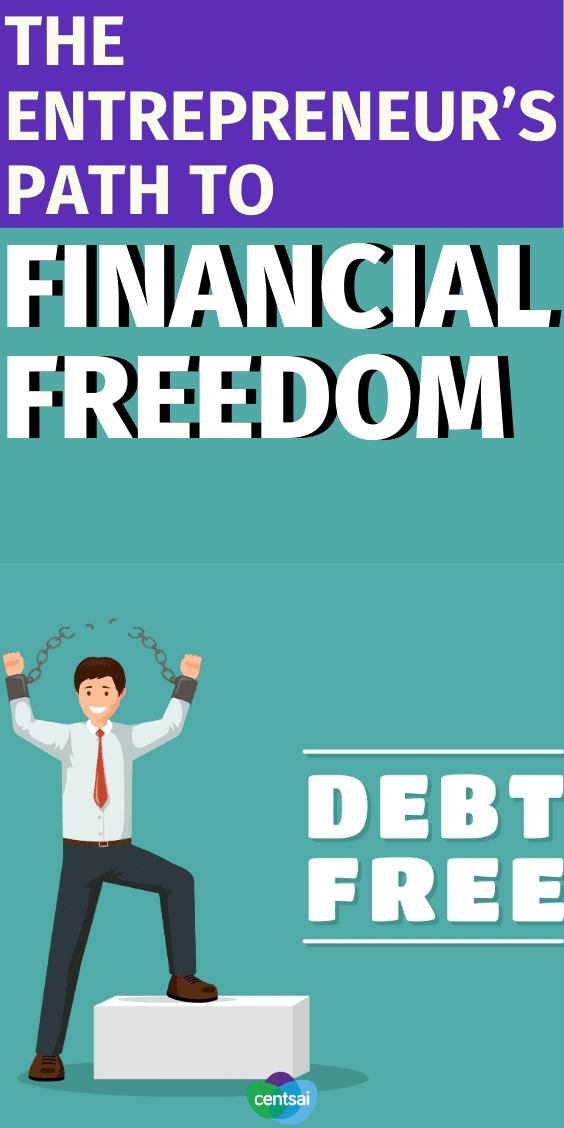
 I recently asked an entrepreneur what inspires her to show up every day ready to work, ready to invest and do whatever it takes to succeed, and she responded without hesitation: “financial freedom.”
I recently asked an entrepreneur what inspires her to show up every day ready to work, ready to invest and do whatever it takes to succeed, and she responded without hesitation: “financial freedom.”
When I heard her answer, it brought me back to the moment I decided to 100 percent commit to being an entrepreneur and leave my corporate career.
In my nine-to-five job, there were layers of bosses above me determining my earning potential, which was deduced by some black-box formula and presented to me in terms of benefits, an annual salary, and a bonus. The bonus was promised to meet a minimum but was also promised not to exceed a maximum regardless of my contribution to the goal. That bothered me.
I left corporate America for two reasons. First, I wanted to be in charge of my own financial destiny and let my hard work enable me to earn money without a cap. If I earned a small amount, that was on me. If I earned a large amount, that was on me too. Plus I could give back to my community and create jobs.
Second, I wanted to explore running my own company. I’m fascinated with business models and how different models yield different results. I also love being my own boss.

So, with this perspective in mind, how does an entrepreneur approach the path to financial freedom knowing the only cap to this equation is one we put on ourselves through our own choices and execution (or lack thereof)?
I say this because, you don’t need to be an entrepreneur to attain financial freedom. When you research how to attain it, you find steps to get there through being responsible with money such as described by David Rae, a financial planner.
His advice is what you’d expect:
- Live debt free.
- Budget and stick to it.
- Save four months’ worth of expenses in cash.
- Invest early for compounding.
- Live beneath your means.
- Use a financial planner.
This is great advice and we should all aim to live like this. But when you’re an entrepreneur and you need to make decisions that make it hard or impossible to follow these rules because you’re emptying your bank accounts and maxing out a credit card to invest in your company’s launch and growth, how do you reconcile this advice with what you have to do to make your company succeed?
As a serial entrepreneur, I’m still searching for the answer to this question. I may not have the perfect blueprint to share.
But in my experience, I’ve learned a few things that may help you formulate the right answer for you on your entrepreneurial journey to financial freedom.
Here are four ideas worth evaluating as you pave your path to relieving stress associated with financial obligations.
Start Your Free Trial with P2P Today
Know Your Goal
We all want it, but when asked for a specific number of how much money we need to not worry about financial obligations, most of us (myself included) do not know the answer.
To complicate matters, as we grow older, this notion of financial freedom is a moving target. When you’re young with only yourself to care for, you want to cover your basic expenses. When you have kids and a spouse, you need more stability. When you start to age, you begin to factor in health-care needs.
As you probe deeper into what freedom looks like for you, you realize that money in and of itself is not the reason we strive for financial freedom — which is probably why it’s so darn hard to come up with a number.
Excercise figuring out your goals: Answering the question “Why is it important to have financial freedom?” five times and changing the Why each time helps you realize the true meaning of freedom. What you’re really seeking is likely joy for yourself and those around you.
For example, if you ask, “Why is it important to have financial freedom?” you may answer, “Because I need to pay my bills.”
Then ask the Why a second time, changing the question to: “Why is it important to pay your bills?” Continue this a total of five times.

Do this simple Five Whys exercise to figure out what you’re working toward in terms of numbers and sentiments and write them down.
Post this on your desk where you can see if every day, so you don’t lose sight of your bigger picture goals when working with day-to-day details and decisions.
Find Work-Life Integration
You’ve probably pondered the question: “Do I live to work or work to live?” While entrepreneurs can’t avoid some periods of long work hours given the nature of growing a business or launching a new product, you can plan to come up for air and spend time with your family or go for a vacation even if it’s short.
Otherwise, you’re living in a fantasy that one day when you make it big, you’ll have all this time to do what you want and finally have the joy you seek.
How can you access joy now without having to wait for financial freedom and work toward it at the same time?
This is where everything starts to overlap and why it’s important that you know your goals. They point you toward your north star when faced with tough decisions.

Without considering the impact on your family and personal life, you could end up making decisions that are best only for your business and wake up after five or 10 years and wonder where the time went and why your savings isn’t where you’d planned them to be.
Exercise to finding work-life integration: Design a schedule that integrates your family, friends, personal time, and your work so that you’re honest with yourself and everyone else about what’s possible and what it takes to make it work.
As things change, let the schedule evolve, but at the same time, know your number.
Make decisions that will enable you to reach your financial goal along the way.
Start Your Free Trial with P2P Today
Co-Create With Your Clients, Employees, and Partners
When you’re clear on what you care about most, decisions can be easier. You can create systems that make progress inevitable. You can let others into your creative white space with ease because you recognize right away if their contributions are helping move you in the right direction or holding you back. Be intentional with letting them participate.
Exercise to co-creating: Leverage the assistance from others so you don’t have to do everything yourself. Be the filter so that only ideas that meet all criteria are put in place.
Build a Portfolio Approach
I shared ideas about building a portfolio of products or businesses in a previous post. The idea there was to diversify your income sources to build a resilient business. Another reason to build out a portfolio is to help you not become too attached to one thing you’ve created. This enables you to maintain an objective point of view when it comes to business decisions.
Both concepts around a portfolio of multiple revenue sources help shore up your financial freedom position.
Exercise to building a portfolio: Brainstorm the next addition to your portfolio and figure out a plan to put it in place.
Access Joy Now
Knowing your goals from the 30,000-foot view, you know that joy and a release of stress are the reasons you seek financial freedom.
The magic of joy is that you can experience it from both small and big things.
Read your goals as often as you need to make sure you’re finding joy every day — otherwise, you’re living to work, and no amount of financial freedom will feel free.
At the same time, figure out your personal blueprint to achieve reliable income that will cover your financial responsibilities and execute that plan. Keeping your goals in mind, let it all work together to guide you to financial independence.
Belinda DiGiambattista is a serial entrepreneur, business coach, and outsourced financial controller and can be found at www.belindadi.com.
Plus Get Extra Savings When Joining From CentSai
The post The Entrepreneur’s Path to Financial Freedom appeared first on CentSai.
from Stories and Tips for Ways to Earn Money Now | CentSai https://ift.tt/CDAYUJm
Comments
Post a Comment
We will appreciate it, if you leave a comment.